Dalit Kingdom
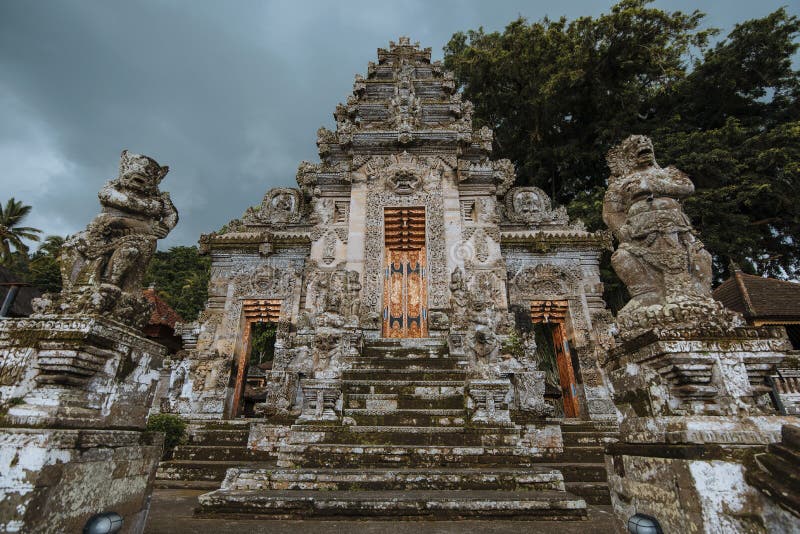
Chamaraja Wodeyar IX

 Kamarupa
Kamarupa
Bukka Raya I

Bukka Raya I (also known as Bukka I or Bukkaraya) was a pivotal figure in medieval Indian history, serving as the second emperor of the Vijayanagara Empire from the Sangama Dynasty. He reigned from approximately January/February 1356 until his death on February 24, 1377, succeeding his elder brother Harihara I (Hakka Raya). Under his leadership, the empire expanded significantly, establishing it as a bulwark against northern Muslim invasions and a patron of Hindu culture, arts, and scholarship. His rule marked the transition from a nascent kingdom to a prosperous South Indian power, blending military prowess with religious tolerance and administrative reforms.
1. Early Life and Origins
Birth and Background: Born around 1300–1310 CE (exact date unknown) in the region of modern-day Karnataka or Andhra Pradesh, Bukka was the younger son of Bhavana Sangama (also spelled Sangama Devi or Sampana), a local chieftain and feudatory. His mother was Maravve Nayakiti. The family belonged to the Sangama lineage, which claimed descent from the Yadava clan of the Chandravamsa (lunar dynasty) Kshatriya lineage, portraying themselves as warrior-herdsmen with roots in pastoralist communities.
Social and Community Origins: Historical accounts describe the Sangama brothers as originating from a cowherd pastoralist community (Gadariya or Yadava stock), possibly with Kuruba (shepherd) affiliations in Karnataka. Some theories link them to the Kamma community as former commanders in the Kakatiya army of Warangal (Telangana). They signed inscriptions in Kannada, Telugu, and Tamil, reflecting a multicultural Deccan background with devotion to Karnataka deities like Virupaksha and Keshava. There is no evidence associating Bukka with the Pasi community (a Scheduled Caste group in northern India); claims of such origins appear unsubstantiated and likely erroneous.
Early Career: Bukka and Harihara served as military commanders under the Hoysala king Vira Ballala III and later the Kakatiya ruler Prataparudra II of Warangal. The brothers rose through ranks, gaining experience in warfare and administration amid the turbulent Deccan politics of the 14th century.
2. Conversion to Islam and Reconversion to Hinduism
A dramatic episode in Bukka's life involved his temporary conversion to Islam. Around 1323–1327 CE, following the Delhi Sultanate's invasion of Warangal by Muhammad bin Tughlaq, the brothers were captured as prisoners and taken to Delhi. There, they converted to Sunni Islam (possibly under duress) and served in the Sultan's court for about a decade (1323–1334 CE).
Escape and Reconversion: Influenced by the saintly scholar Vidyaranya (also known as Madhavacharya), a pontiff of the Sringeri Sharada Peetham, Bukka and Harihara escaped and reconverted to Hinduism around 1334–1336 CE. Vidyaranya played a crucial role in their spiritual and political revival, advising them to establish a Hindu kingdom to counter Islamic expansion in the south. This event symbolizes resilience and the blending of Shaivite-Vaishnavite traditions in Vijayanagara's founding ethos.
3. Founding of the Vijayanagara Empire
Establishment: In 1336 CE, with Vidyaranya's blessings and support from the Hoysala ruler, Harihara and Bukka founded the Vijayanagara Empire (named "City of Victory") near the Tungabhadra River. The initial capital was Anegondi, later shifted to the more defensible Vijayanagara (modern Hampi, Karnataka) for strategic reasons.
Context: The empire emerged as a response to the Delhi Sultanate's southward thrusts, filling the power vacuum left by the Hoysalas and Kakatiyas. Bukka's administrative acumen complemented Harihara's military focus, laying the foundation for a kingdom that would endure until 1646 CE.
4. Reign and Achievements (1356–1377)
Bukka's 21-year rule (37 years per some chroniclers like Nuniz) transformed Vijayanagara into a cultural and economic powerhouse. He focused on consolidation, expansion, and patronage.
Administrative Reforms: Bukka centralized governance, dividing the empire into provinces (mandalams) under nayakas (governors). He promoted irrigation (e.g., tanks and canals), trade guilds (e.g., with Arabs and Chinese), and urban development in Vijayanagara, which grew into a cosmopolitan city with markets, temples, and aqueducts.
Economic Prosperity: Agriculture flourished via the Tungabhadra doab's fertile lands; the empire controlled key ports like Goa and Bhatkal, exporting spices, cotton, and diamonds. Bukka sent diplomatic missions to China (Yuan Dynasty) around 1370 CE, fostering Silk Road ties.
Cultural Patronage: A devout Hindu, Bukka supported Vedic scholarship. Under his aegis, scholars like Sayana (his brother-in-law) produced commentaries on the Vedas, Brahmanas, and Aranyakas. He appointed Telugu poet Nachana Soma as court poet and commissioned works like the Madura Vijayam. Temples to Virupaksha and Vithala were expanded, blending Dravidian and Indo-Islamic architecture.
5. Military Campaigns and Expansion
Bukka's reign saw aggressive southward expansion, securing the empire's frontiers:
Year(s)CampaignKey Outcomes
1360s Clashes with Bahmani Sultanate Gained control of the Tungabhadra-Krishna doab from sultans like Mohammed Shah I and Mujahid Shah; captured Goa.
1371 Madurai Sultanate Campaign Son Kumara Kampana led the invasion, defeating the Sultanate and extending borders to Rameswaram; chronicled in Madura Vijayam by Gangambika (Kampana's wife).
1374 Eastern and Southern Frontiers Subdued parts of the Eastern Ganga Dynasty (Odisha); forced tributes from Jaffna Kingdom (Sri Lanka) and Zamorins of Calicut (Malabar).
These victories established Vijayanagara as the dominant Hindu power in South India, balancing threats from the Bahmanis in the north.
6. Religious Policies and Tolerance
Primarily Shaivite, Bukka promoted Hinduism but showed pragmatic tolerance. He reconfirmed grants to Jain and Muslim institutions and allowed Persian settlements in the capital. His devotion to Virupaksha (Shiva) is evident in inscriptions, yet he supported Vaishnava scholars like Vidyaranya.
Legacy in Religious Harmony: Bukka's rule set a precedent for Vijayanagara's syncretic culture, influencing later bhakti movements.
7. Family and Succession
Wives and Children: Bukka had multiple queens; notable was Gauri (mother of Harihara II). Key sons included:
Kumara Kampana (military commander, d. 1379).
Harihara II (successor, r. 1377–1404).
Other sons: Bukka II, Virupaksha Raya I.
Dynastic Line: As part of the Sangama Dynasty (1336–1485), Bukka's lineage continued through Harihara II, emphasizing fraternal co-rule.
8. Death and Legacy
Death: Bukka Raya I died on February 24, 1377, at Vijayanagara (Hampi), aged around 67. His passing was mourned widely; he was cremated with royal rites.
Enduring Impact: Bukka's expansions laid the groundwork for Vijayanagara's golden age under successors like Deva Raya II. The empire preserved South Indian Hindu traditions against Turkic incursions, fostering Kannada, Telugu, and Tamil literature. Hampi, a UNESCO site, stands as a testament to his urban vision. Modern historiography views him as a unifier who blended martial valor with scholarly patronage.
Modern Recognition: Featured in Kannada epics like Karnata Bharata Kathamanjari and films like Hakki Bukka (2000). Debates on his origins persist, but his Yadava-Kuruba pastoralist roots underscore the empire's non-Brahminical ethos.
Summary: Bukka Raya I's life—from captive convert to empire-builder—embodies resilience and vision. Far from disadvantaged origins, his pastoralist Kshatriya background enabled leadership in a feudal era. He is celebrated as the "consolidator" of Vijayanagara, whose policies shaped South India's medieval destiny for over three centuries. No credible sources link him to the Pasi community; such associations may stem from modern reinterpretations.
Jambavan
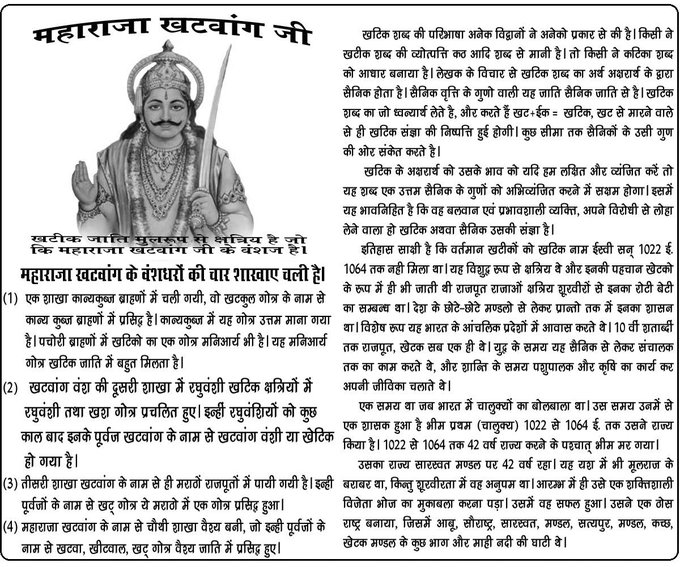

Mahabali
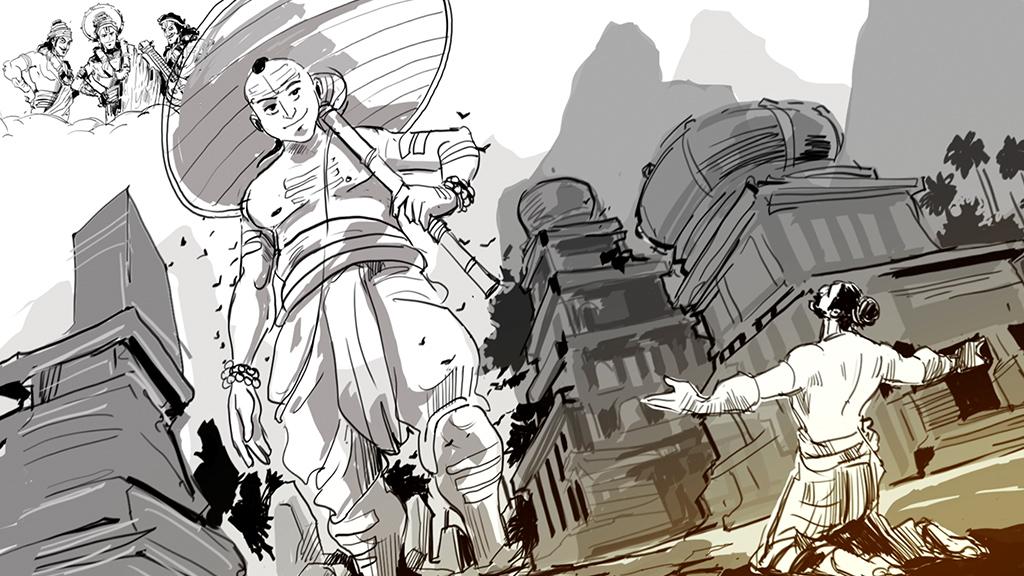 PreviousNext
PreviousNext
Lakhan Pasi
The Legendary Dalit King and Founder of Lucknow

Lakhan Pasi, often revered as the "Dalit King" or "Maharaja Lakhan Pasi," is a semi-legendary figure in Indian history, particularly within the folklore and cultural memory of the Pasi community—a prominent Scheduled Caste (Dalit) group in northern India. He is celebrated as a valiant warrior-king who ruled parts of the Awadh region (present-day Uttar Pradesh) during the 10th or 11th century CE. While historical records of his reign are scarce and largely based on oral traditions, community narratives, and later political appropriations, Lakhan Pasi symbolizes Dalit pride, resistance, and ancient sovereignty. His story challenges dominant historical narratives by asserting that Dalit communities once held kingship, countering centuries of marginalization.
Historical and Cultural Context: The Pasi Community
To understand Lakhan Pasi, it's essential to contextualize him within the Pasi (also spelled Passi) caste. The Pasis are one of India's largest Dalit communities, constituting about 16% of Uttar Pradesh's Dalit population (around 6.5 million people as per the 2011 Census). Traditionally associated with occupations like toddy-tapping (from palm trees), pig-rearing, and watchmanship, they have been classified as a Scheduled Caste in states like Uttar Pradesh and Bihar since India's independence.
Pasis trace their ancient roots to warrior clans, with folklore claiming descent from Bhil or other indigenous groups. Historians like Ramnarayan Rawat note that Pasi involvement in movements like the Kisan Sabha (peasant uprisings) in the early 20th century was significant but often downplayed in upper-caste-dominated histories. In recent decades, Hindu nationalist groups (e.g., RSS affiliates) and Dalit assertion movements have revived Pasi icons like Lakhan Pasi to mobilize voters and foster community identity. This "invention of caste history," as scholar Badri Narayan describes it, reshapes myths into tools for socio-political empowerment, emphasizing self-respect over victimhood.
Origins and Reign
Lakhan Pasi is said to have ruled in the medieval period, roughly between the 10th and 12th centuries, during a time when the Awadh region was a patchwork of local kingdoms contested by Rajputs, Bhils, and emerging Islamic forces. Community lore portrays him as a Bhar-Pasi (a sub-clan) king from a lineage of Shudra rulers who controlled fertile lands along the Gomti River.
- Founding of Lucknow: Lakhan Pasi is credited with establishing the city of Lucknow (originally called Lakhanpur or Lakhnavati, named after him or his queen). His palace is believed to have stood where King George Medical College (now King George's Medical University) now exists. According to tradition, he built forts and settlements to protect his people from invasions, transforming the area into a prosperous hub.
- Military Prowess: As a warrior-king, Lakhan Pasi is depicted as fiercely independent. Legends describe him defending his realm against Rajput kings like Jai Chand and generals Alha-Udal (from Chandela folklore). One vivid tale recounts a surprise attack by Ghazi Saiyyad Salar Masud (a 11th-century Muslim invader and nephew of Mahmud of Ghazni) on the night of Holi. Despite the treachery, Lakhan Pasi fought valiantly, reportedly continuing the battle even after being beheaded—his headless body allegedly wielded a sword until victory. To repel the invaders, his forces released pigs (sacred to some Dalit communities but terrifying to attackers), causing the enemy to flee in panic. This story underscores themes of ingenuity and resilience.
His capital was at Lakhanpur (modern Lucknow), and he is said to have extended influence over nearby areas like Faizabad and Allahabad. However, like many pre-colonial rulers, his era lacked written chronicles; accounts rely on folk songs (Alha-Khand), community smritis (memoirs), and 20th-century Dalit literature.
Legacy and Symbols of Pride
Lakhan Pasi's legacy endures through cultural symbols and community rituals:
- Monuments and Memorials: The Bijli Pasi Fort (linked to his contemporary, Maharaja Bijli Pasi) in Lucknow has been proposed for renovation as a Pasi memorial. In 2018, Uttar Pradesh's BJP government announced plans for parks and statues honoring Pasi icons, including Lakhan Pasi, to woo Dalit voters. A Lakhan Pasi Chowk exists in Lucknow, and calls persist to rename the city Lakhanpuri (echoing earlier pushes for Lakshmanpuri after the Ramayana's Lakshmana).
- Festivals and Commemorations: His birth anniversary (often observed in October) features processions, folk performances, and tributes. Events at Lucknow's Pasi forts draw thousands, blending history with calls for social justice. In 2023, similar celebrations for Bijli Pasi highlighted shared Pasi heroism.
- Folklore and Literature: He appears in Dalit epics and books like Grave Diggers of History (2001) by Dalit Voice Publications, which urges research into subcaste histories. Scholars like Badri Narayan in Fascinating Hindutva (2000) analyze how such figures counter "untouchability" narratives by claiming ancient glory.
Political Appropriation
Lakhan Pasi has become a flashpoint in Uttar Pradesh's caste politics, where Pasis wield influence in 30+ Lok Sabha seats (e.g., Faizabad, Lucknow, Rae Bareli).
- Dalit Assertion: Parties like the Samajwadi Party (SP) and Bahujan Samaj Party (BSP) invoke him to consolidate Pasi votes. In 2024, SP MP Awadhesh Prasad (from Faizabad) referenced Pasi icons like Bijli Pasi and Uda Devi (a 1857 rebel) during his parliamentary oath, signaling a shift from BJP support.
- BJP's Outreach: Facing Pasi drift post-2024 elections (where INDIA bloc gained ground), the BJP has amplified Lakhan Pasi. In July 2024, UP BJP chief Bhupendra Singh Chaudhary hailed him as Lucknow's "actual architect" at a party meet, urging remembrance over Ramayana-linked renaming. Leaders like Chirag Paswan (LJP-RV) demand memorials for Pasi kings like Suheldev (another icon), tying it to anti-encroachment on forts.
This "fascination with Dalit icons," as The Hindu noted in 2016, helps BJP counter rivals like BSP's Mayawati, who built Dalit memorials during her tenure.
Historical Debates: Fact vs. Myth
Critics argue Lakhan Pasi's story is more myth than history, akin to Bijli Pasi (no concrete evidence, but honored with a 2000 postal stamp). Upper-caste histories often omit Shudra/Dalit rulers, focusing on Rajputs or Mughals. Yet, as Badri Narayan argues, these narratives empower marginalized groups, proving Dalits were not always "oppressed" but rulers displaced by invasions and caste rigidification.


(Wikipedia)
Usinaras (Devanagari:उसीनर) were an ancient people attested to have been living in central Punjab since remote antiquity. They were often associated with Madras, Kekayas, Sibis etc. and their territory formed part of Vahika country according to evidence of Pāṇini.
Usinaras in Vedic literature
There is a reference to princess Usinarini (i.e. queen of Usinara) in the Rigveda Aitareya Brahmana seems to locate Usinaras along with the Kurus, Panchalas and the Vasas (Savasa) in middle region or Madhyadesha (Mid India). Kaushitakai Upanishada colllocates the Usinaras with the Satvat-Matsyas, the Kuru-Panchalas and the Svasas. They probably lived in a territory to the north of Madhyadesa, as neighbors to the Udichyas or the northerners. This is why the Gopatha Brahamana collocates the Usinaras and Svasas with the Udichyas or northerners.
Divyavadana refers to the Svasas as people of Uttarapatha with headquarters at Takshasila to which king Ashoka was deputed by his father Bindusara as a Viceroy to quell their rebellion. The ancient Savasa or Svasa is said to be modern Chhibba which comprises Punch, Rajauri and Bhimbara.
Thus, the Usinaras, the very neighbors of the Svasas must also be located in Punjab proper.
Mahabharata references
There are many references to Usinaras in the epic Mahabharata. At several places, it refers to king Usinara and his son prince Sibi or Sivi whose charity has been enormously glorified by sage Markandeya.
Usinara prince in Draupadis’ Sywayamvara
Adi Parva of Mahabharata says that prince Sivi, son of Usinara had attended Draupadi's self-choice (Swayamvara; "groom-choosing") ceremony along with the kings of neighbouring kingdoms viz Shalya, the king of Madra Kingdom, with his son, the heroic Rukmangada, Rukmaratha, Somadatta (king of Bahlika Kingdom) of the Kuru race with his three sons - Bhuri, Bhurisrava, and Sala and Sudakshina Kamboja the arch-bowman of the Puru race See Ganguli's Trans: .
Usinaras in Kurukshetra war
The Usinaras had joined the Kurukshetra war on the side of Kauravas. Karna Parava refers to the Kekayas, the Malavas, the Madrakas, the Dravidas of fierce prowess, the Yaudheyas, the Lalittyas, the Kshudrakas, the Usinaras, the Tundikeras, the Savitriputras etc. who had supported Karna on 17th day of the war, as all having been slain by Arjuna.
Usinaras as degraded Kshatriyas
Anusasana Parva of Mahabharata states that the tribes of the Sakas, Yavanas, Kambojas, Dravidas, Kalingas, Pulindas, Usinarass, Kolisarpas, Mahishakas and others were originally noble Kshatriyas but became Vrishalas (degraded Kshatriyas) due to their lose of contact with the Brahmanas.
Further epic references
According to Mahabharatra, Sibi was son of the king of Usinara country near Gandhara. The charity and devotion of prince Sibi have been greatly extolled by the sage Markandeya in the epic.
Mahabharata also speaks of Usinara princes as sacrificing on two small streams near Jamna There was also one king Usinara i.e. king of Usinara country, contemporary of king Janaka of Videha. Garagya Balaki, a contemporary of Janaka lived for some time in Usinara country.
Mahabharata (and Katha sarit-sagara) refer to Usinaragiri which is located near Kankhala at the point where Ganges issues from the hills. It is said to be identical with Usiragiri of Divayavadana and Usira-dhvaja of Vanaya texts.
There is also an epic reference Suyajna, the king of the Usinaras.
In the Sabha Parva of the epic, Krishna tells that Usinara had a daughter named Aushinara. Aushinara married sage Gautama, at Magadha, the kingdom of Jarasandha. She gave birth to many children, including monarchs like Kakshivat.
Bhagavata Purana and the Usinaras
Bhagavata Purana attests that the prince of Usinara along with princes from Matsya, Kosala, Vidharbha, Kuru, Srnjaya, Kamboja, Kekaya, Madra, Kunti, Anarta, Kerala was present at Samanta-pancaka in Kurukshetra at the occasion of the solar eclipse.
Bhagavata Purana also states that the Usinaras, the Sibi, the Madras, and the Kekayas were the direct descendants of Yayati's son Anu. Sibi or Sivi is stated to be son of Usinara.
Consequently, in the literature, the Usinaras are often associated with the Shivis or Sibis (Sibois of the Greek writings) whose chief town Sibipura has been identified with Shorkot, in Jhang district in Pakistan.
Pāṇini's Ashtadhyayi
Pāṇini refers to the Usinaras in several sutras of his Ashtadhyayi and mentions their land as a part of the Vahika country. Though not stated specifically by Pāṇini, in all probability, the Usinaras were under a Sangha government.
Usinara in Buddhist literature
There is a Buddhist reference to one Usinara, said to be king of Benares who lived in the time of Kassapa Buddha. His story is related in the Maha-Kanha Jataka. He is mentioned in a list of kings who, although they gave great gifts, could not get beyond the domain of sense. It is however, not clear if this Usinara was from the Usinara clan or else it was his personal name only.






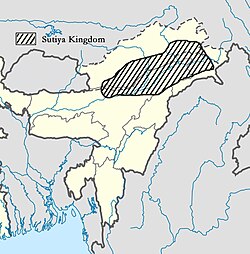







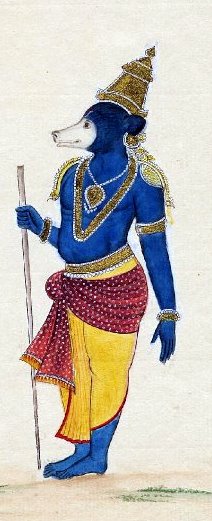









































.jpg)


Comments
Post a Comment
Thanks for feedback